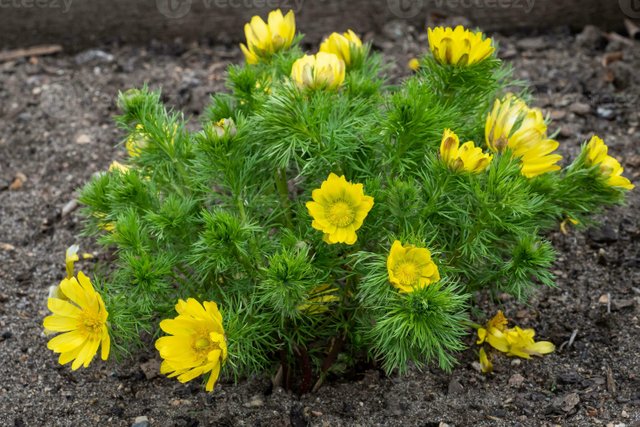Spring Adonis : a medicinal and ornamental plant
Adonis, or spring adonis, belongs to the buttercup family. Its bright flowers often bloom in April. This early bloom gives the plant its common name. People value adonis as a medicinal plant. It is more widely grown for its ornamental beauty.

Adonis is also called hairy adonis or hare grass. Spring adonis can be tricky to grow. Gardeners who cultivate it are rarely disappointed. These plants stay compact, growing up to 30 cm tall. They feature thin stems with lush leaves and bright, single flowers.
Adonises bloom in spring soon after the last cold days. They quickly turn their faces to the sun. Most types bloom in the second half of April. The bloom period isn't very long. These are often the first tender flowers in the garden after winter.
These plants are popular in landscape design. They add striking decor and brighten shrub groups. Adonis can also stand alone as a solo feature. It looks great with boxwoods, thujas, yews, and mahonias. It also pairs well with trimmed garden plants. Adonis enhances alpine slides and rock gardens too.
Adonis vernalis grows in forest-steppe and steppe areas. It can also be found in Crimea. Look for it among mountain bushes and sparse spruce forests. Forest clearings, edges, and open slopes are also common habitats.
The flower stays relatively short, typically 30-40 cm, sometimes reaching 50 cm. Its stem can be simple or branched. The plant has shaggy, deeply divided leaves without stalks. Basal leaves look like scales. They divide into lobes about 6 cm wide and appear brown.
Flowers bloom in April and are quite large, up to 8 cm across. They appear with the leaves, which is a unique trait. Adonis vernalis fruits at different times based on the region. Southern areas see fruits in early summer. Northern regions see them in July. Wrinkled nuts with hooked tips replace the flowers.

The leaves make this plant memorable. They look shaggy. Thin threads stick out in all directions. Flowers are often yellow, but can be red. Red flowers are less common. The rhizome is short. The roots are thick and brown-black.